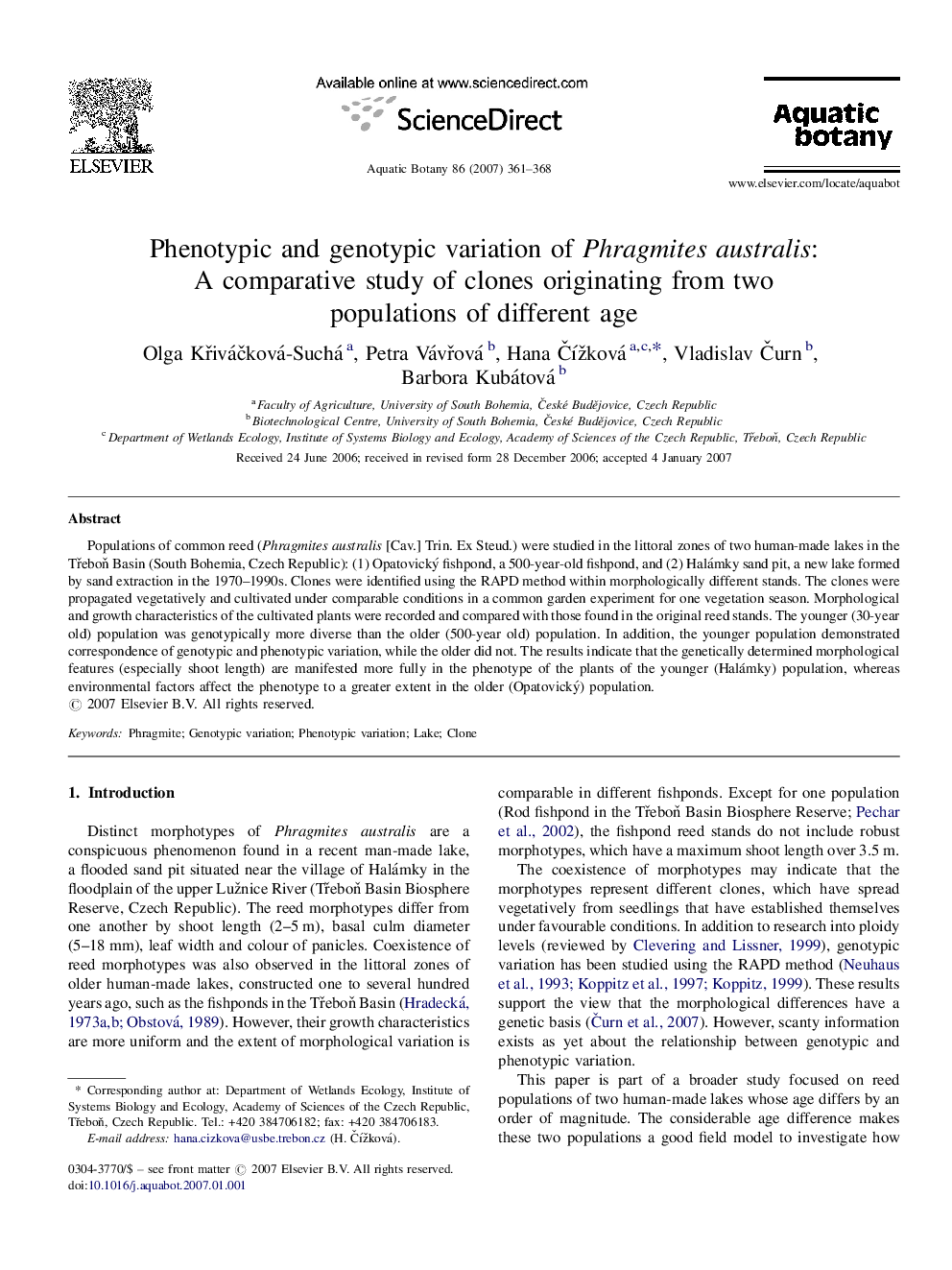| Article ID | Journal | Published Year | Pages | File Type |
|---|---|---|---|---|
| 4528450 | Aquatic Botany | 2007 | 8 Pages |
Populations of common reed (Phragmites australis [Cav.] Trin. Ex Steud.) were studied in the littoral zones of two human-made lakes in the Třeboň Basin (South Bohemia, Czech Republic): (1) Opatovický fishpond, a 500-year-old fishpond, and (2) Halámky sand pit, a new lake formed by sand extraction in the 1970–1990s. Clones were identified using the RAPD method within morphologically different stands. The clones were propagated vegetatively and cultivated under comparable conditions in a common garden experiment for one vegetation season. Morphological and growth characteristics of the cultivated plants were recorded and compared with those found in the original reed stands. The younger (30-year old) population was genotypically more diverse than the older (500-year old) population. In addition, the younger population demonstrated correspondence of genotypic and phenotypic variation, while the older did not. The results indicate that the genetically determined morphological features (especially shoot length) are manifested more fully in the phenotype of the plants of the younger (Halámky) population, whereas environmental factors affect the phenotype to a greater extent in the older (Opatovický) population.
